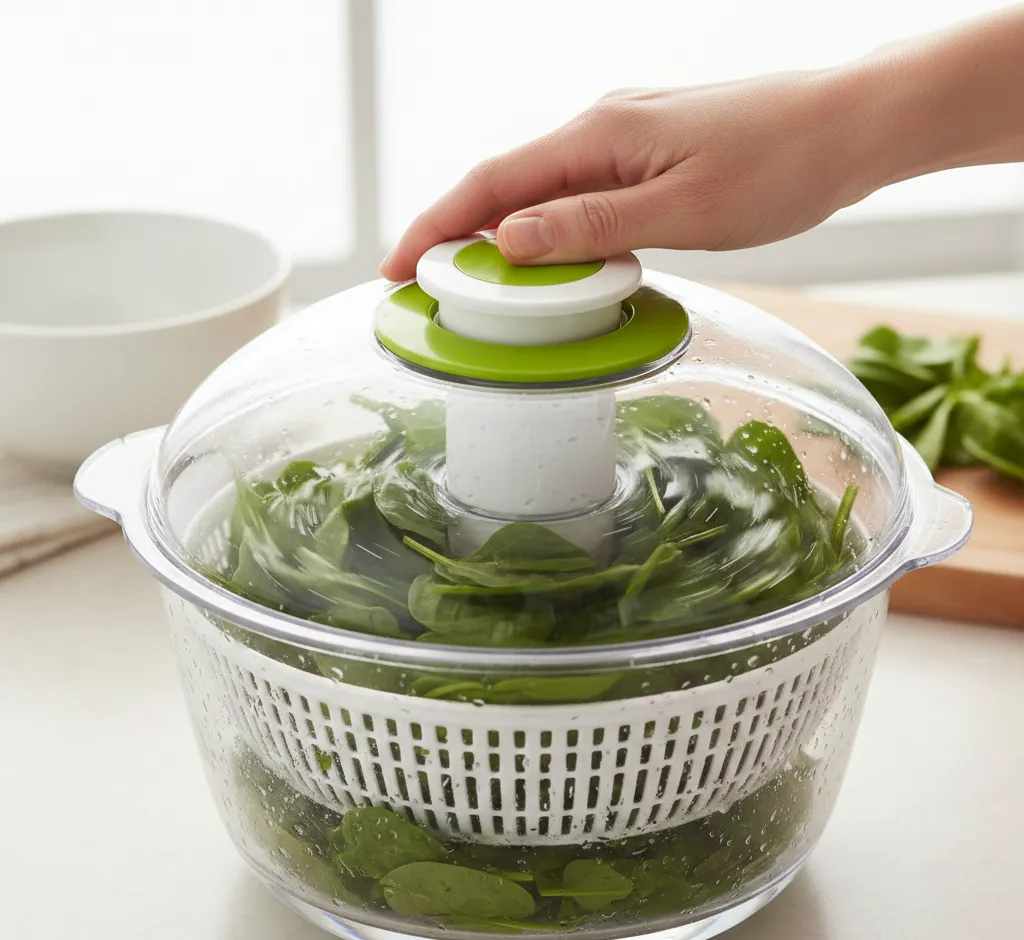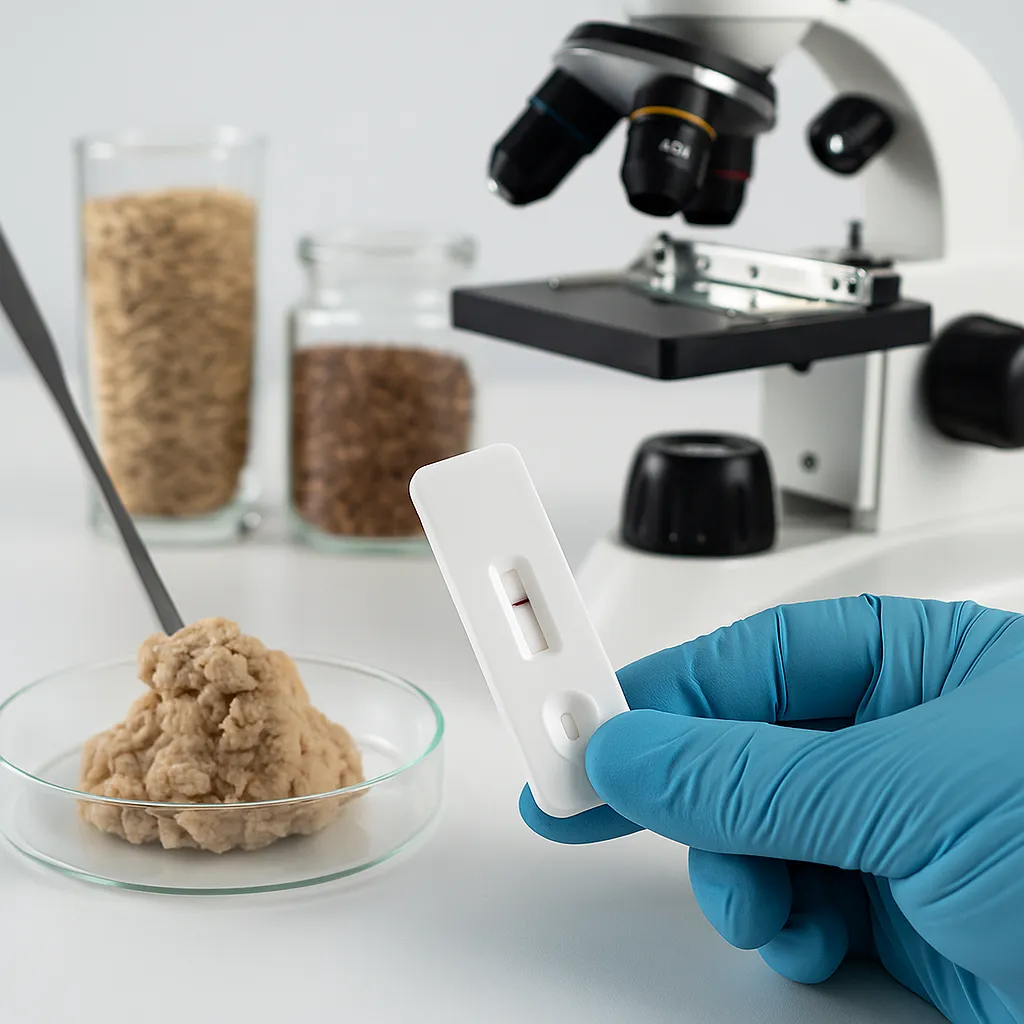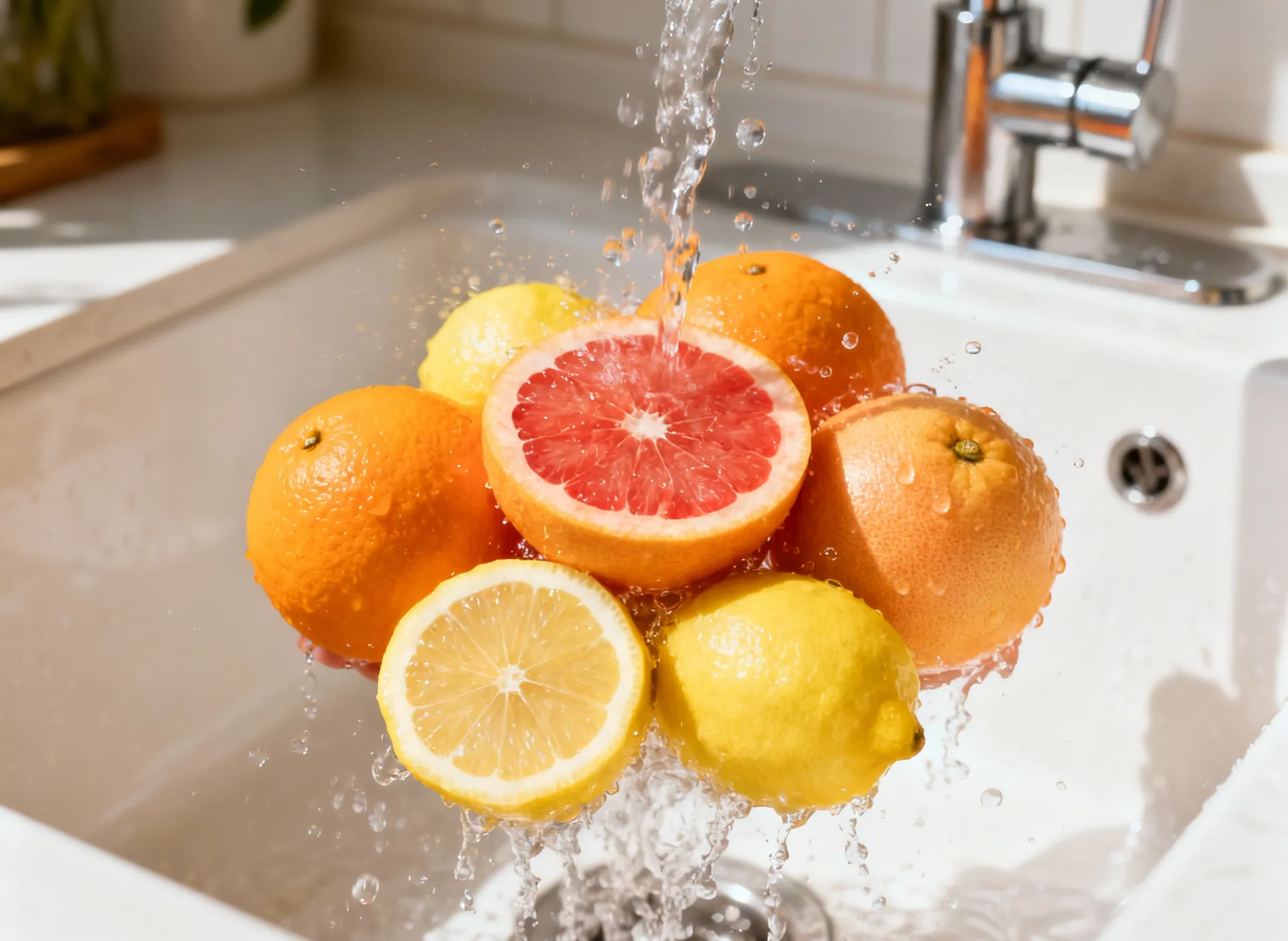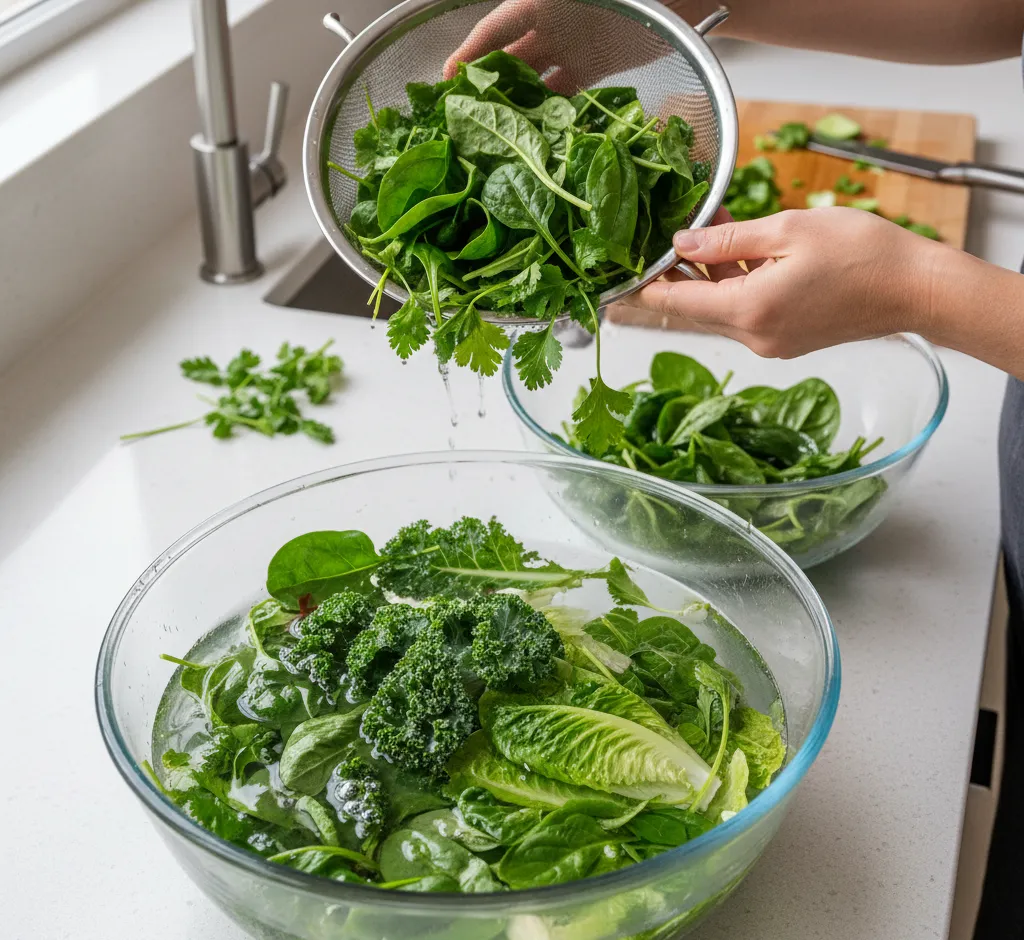The Essential Guide to Washing Delicate Greens: Tools and Techniques for Crisp, Clean Salads
Discover the essential tools and techniques for perfectly washing and drying delicate greens like baby spinach and arugula. Learn why a salad spinner is the best investment for crisp, clean salads every time.

🥬 The Essential Guide to Washing Delicate Greens: Tools and Techniques for Crisp, Clean Salads
There are few culinary pleasures greater than a vibrant, crisp salad. However, the path from garden, farm, or grocery store shelf to your dinner plate is often fraught with a single, necessary chore: washing the greens. For hearty vegetables like kale or Swiss chard, a simple, vigorous rinse might suffice. But when it comes to delicate greens—think baby spinach, arugula, butter lettuce, or mixed spring greens—the process requires a more nuanced, gentle, and effective approach. Improper washing can lead to bruised, waterlogged, or, worse, gritty leaves, compromising the texture and flavor of your entire meal.
This comprehensive guide delves into the best tools and techniques for meticulously cleaning and drying your most fragile salad components, ensuring they emerge perfectly crisp and ready to hold your favorite dressing. We’ll cover everything from the undisputed champion of washing tools to simple kitchen hacks that are just as effective.
💧 Why Proper Washing is Crucial for Delicate Greens
Beyond the obvious—removing visible dirt and grit—washing delicate greens is a critical food safety step. Greens grow close to the soil, making them susceptible to collecting microscopic debris, residual pesticides, and various microorganisms. Furthermore, the handling and transportation processes introduce more potential contaminants. For delicate varieties, two main goals must be met:
- Food Safety: Eliminating or drastically reducing bacteria and foreign particles.
- Preservation of Texture: Cleaning without bruising, tearing, or waterlogging the fragile leaves. Dryness is key for a truly crisp salad and to allow dressing to adhere properly.
Note on Pre-Washed Greens: While convenient, many experts and food safety organizations still recommend giving ‘pre-washed’ or ‘triple-washed’ greens a quick rinse, especially for vulnerable populations. The process, while industrial, is not foolproof, and re-washing in clean water offers an extra layer of peace of mind.
🏆 Tool #1: The Indispensable Salad Spinner
If there is one non-negotiable tool for the salad enthusiast, it is the salad spinner. This ingenious device excels at both washing and, most importantly, drying delicate greens without causing damage. Its mechanism relies on centrifugal force, which is the key to its success.
The Science of the Spin
The salad spinner works by placing the wet greens in the inner basket. When the mechanism (often a pump, crank, or pull-cord) is activated, the inner basket spins rapidly. This spinning motion creates centrifugal force, which pushes the water droplets off the surface of the leaves and through the holes of the inner basket, where the dirty water collects in the stationary outer bowl. Because the leaves are free-floating in the basket and not being squeezed or compressed, they dry quickly and efficiently without being bruised.
Types of Salad Spinners
- Pump-Action Spinners: Widely considered the easiest to use, these feature a large button on the lid that you press down repeatedly to initiate the spin. They often include a 'brake' button to stop the basket instantly. They are often the most effective at rapid drying.
- Crank-Handle Spinners: A handle on the side of the lid is manually rotated. They offer great control over the speed and can be durable, but may require two hands to operate effectively.
- Pull-Cord Spinners: Similar to a lawnmower starter, a pull-cord is rapidly yanked to create the spin. They are typically compact but the cord mechanism can be prone to wear and tear over time.
Optimal Salad Spinner Technique
To get the cleanest, crispiest greens:
- Soak First: Place your separated greens in the inner basket, then fill the entire outer bowl with clean, cool water until the greens are submerged. Swish gently with your hand.
- Wait: Let the greens soak for 5–10 minutes. This allows any heavy sand or grit to settle to the bottom of the outer bowl.
- Rinse and Spin: Lift the inner basket out, pour out the dirty water from the outer bowl, place the basket back in, secure the lid, and spin vigorously until the leaves are visibly dry. Repeat the spin a few times if the greens are particularly wet.
🛠️ Tool #2: The Large, Clean Bowl Method
If a salad spinner is not available, the oldest and gentlest method—soaking and rinsing in a large bowl—is the next best choice, especially for the most delicate varieties like butter lettuce or microgreens.
The Process
- Fill a Large Basin: Use a very large, clean bowl, a stockpot, or a salad spinner’s outer bowl and fill it with cold water. Avoid using the sink basin itself unless it has been meticulously cleaned and sanitized.
- Submerge and Swish: Add the greens and gently swish them around. The goal is to loosen the dirt without tearing the leaves.
- Lift, Don't Pour: After a 5-minute soak, lift the greens out of the water with your hands or a smaller colander. Do not pour the water and greens through a sieve, as this will force the collected dirt back onto the leaves.
- Repeat: Discard the dirty water, refill the bowl with fresh, cold water, and repeat the process until no grit is visible at the bottom of the bowl.
Drying Without a Spinner (Crucial Step!)
Washing is only half the battle; drying is critical. Without a salad spinner, you have a few options for drying delicate greens:
- The Kitchen Towel Roll: Lay a clean, highly absorbent kitchen towel (or several layers of paper towels) flat. Spread the washed greens in a single, loose layer over the towel. Gently roll the towel up, and then apply very light pressure to absorb the moisture.
- The Shake-in-a-Bag Hack: Place the washed and drained greens into a large, clean cloth bag (like a linen shopping bag or pillowcase) or a large plastic grocery bag containing one or two paper towels. Hold the bag securely over your head and spin your arm in a wide circle for about 15–20 seconds. This is a DIY centrifugal force method, but be careful not to create a kitchen disaster!
🧺 Tool #3: Fine-Mesh Sieves and Strainers
While not ideal for the washing process itself (due to the risk of re-depositing dirt), a fine-mesh sieve or a standard colander plays a vital role in the pre-rinse and post-soak draining.
- For Pre-Rinsing: Use a fine-mesh sieve to hold delicate herbs like basil or cilantro under a gentle stream of running water before a final soak. The mesh prevents the small, delicate leaves from escaping down the drain.
- For Draining Microgreens: Microgreens are too tiny and fragile for a full-sized spinner. After a quick soak-and-lift from a bowl of water, lay them in a fine-mesh sieve to drain briefly, then transfer them immediately to a clean paper towel for pat-drying.
🧊 The Importance of Water Temperature and Post-Wash Crispness
The temperature of your water has a direct impact on the final texture of your salad. Always use cold water. Cold water not only helps to firm up the cell structure of the leaves, making them crisper, but it also slows down the growth of microorganisms.
The Ice Bath Technique
For greens that have lost a bit of their vitality or for an extra-crisp finish, try a brief ice bath:
- After the initial wash (using the bowl or spinner base), fill your washing basin with water and several ice cubes.
- Submerge the clean greens for 3–5 minutes.
- Lift them out and dry them thoroughly using your salad spinner or the towel method. The rapid temperature drop will shock the leaves, helping them become notably firmer and crisper.
🚫 What to Avoid When Washing Delicate Greens
To preserve the quality and safety of your greens, avoid these common mistakes:
- Avoid Soaps and Detergents: Never use dish soap, laundry detergent, or even harsh commercial produce washes. Greens are porous and can absorb these chemicals, leaving an unpleasant and potentially unsafe residue. Plain, cold water is the most effective and safest cleaning agent.
- Avoid High-Pressure Water: Rinsing directly under a forceful kitchen faucet can bruise and damage delicate leaves like butter lettuce or baby spinach, leading to premature wilting. Always use a gentle stream or, preferably, the soaking method.
- Avoid Overcrowding the Spinner: Overloading your salad spinner prevents the leaves from moving freely, resulting in poor drying and potential bruising. Work in small batches for the best results.
- Avoid Washing Too Early: Only wash and dry the amount of greens you plan to use within a day or two. Moisture encourages spoilage. Washed greens, even well-dried ones, have a shorter shelf life than unwashed greens.
🍽️ Summary: Choosing Your Perfect Washing Tool
The best tool is the one that achieves the ultimate goal: **perfectly clean and completely dry greens** with minimal physical damage. Here is a quick comparison:
| Tool | Pros | Cons | Best For |
|---|---|---|---|
| Salad Spinner (Pump/Crank) | Most effective drying, gentle on leaves, fast, multi-use (washing & drying). | Requires storage space, higher initial cost. | All delicate and bulk greens (spinach, arugula, mixed bags). |
| Large Bowl/Basin | Very gentle, low cost, requires no special equipment, excellent for initial soak. | No built-in drying mechanism, requires separate drying step, slower. | Extremely delicate greens (butter lettuce, microgreens, herbs). |
| Clean Kitchen Towel | Great for drying without a spinner, zero cost (if you own towels). | Slow, requires careful rolling/patting to avoid bruising. | Post-wash drying for the most fragile leaves. |
Investing in a high-quality salad spinner is a game-changer for anyone who frequently prepares salads. It transforms the mundane task of washing greens into a quick, efficient process that guarantees a better-tasting, crisper salad every time. Coupled with the classic cold-water soak, your delicate greens will be clean, safe, and ready to be the perfect base for your next culinary creation.


